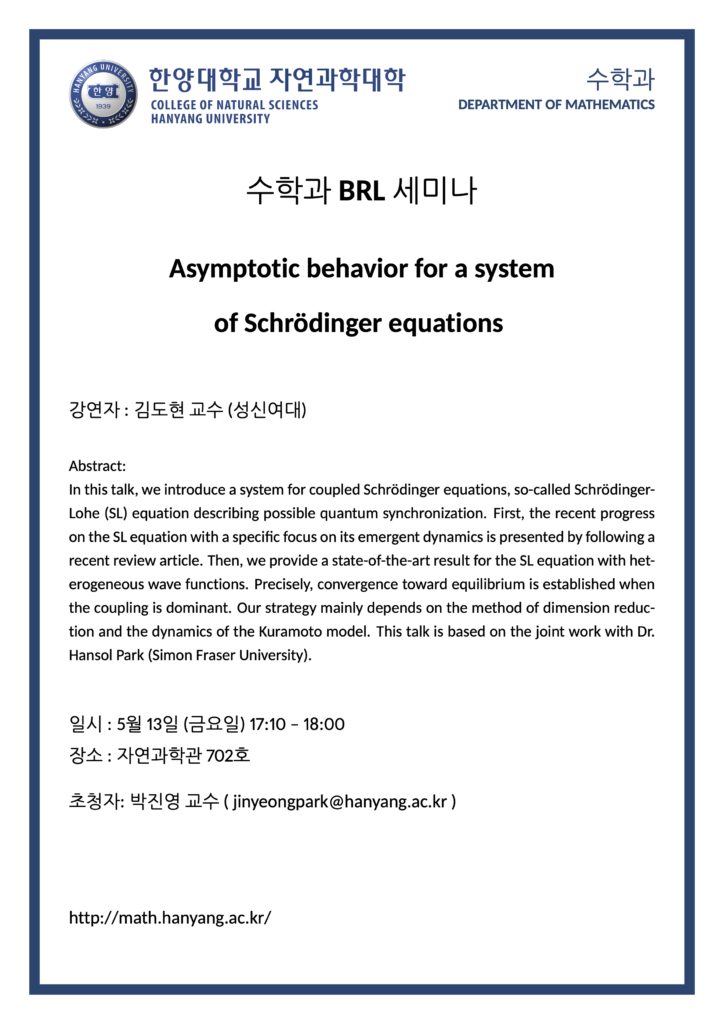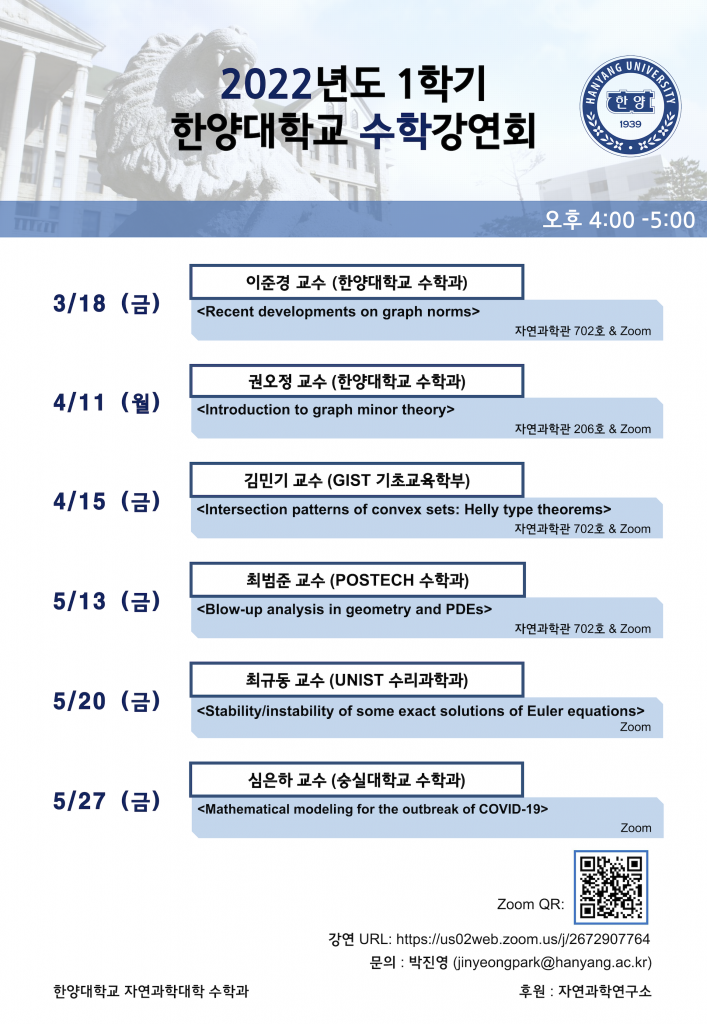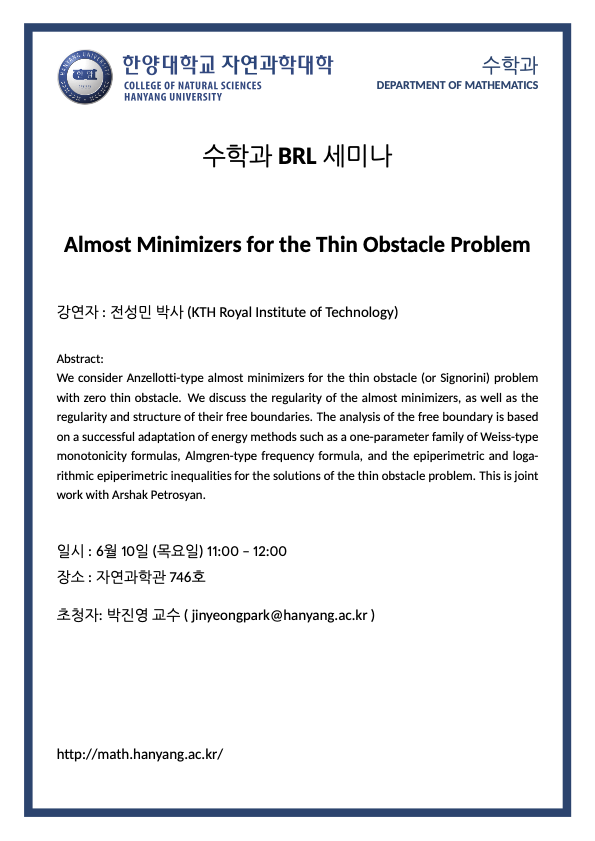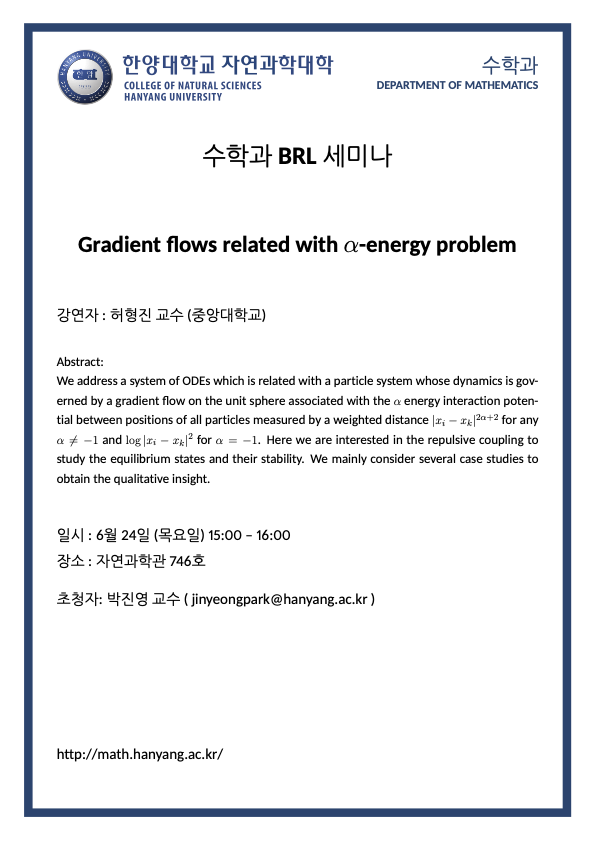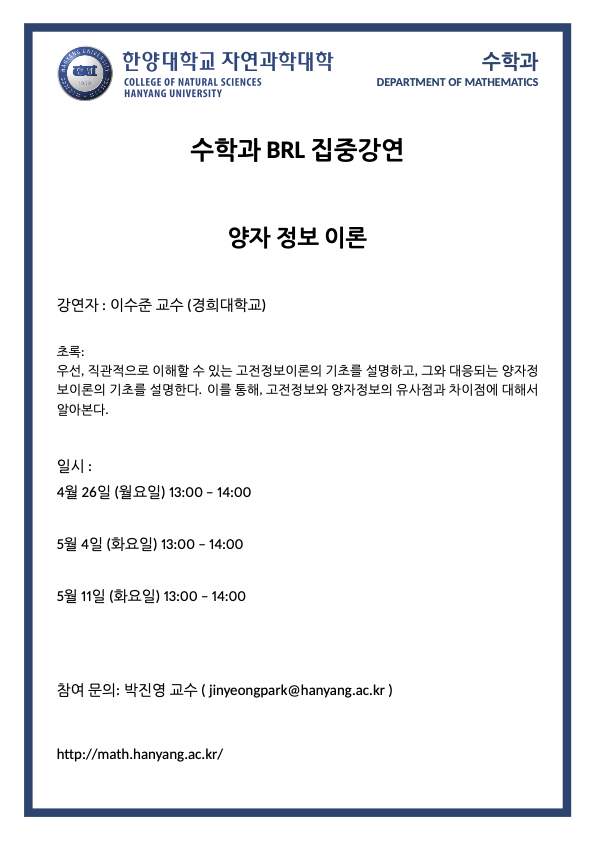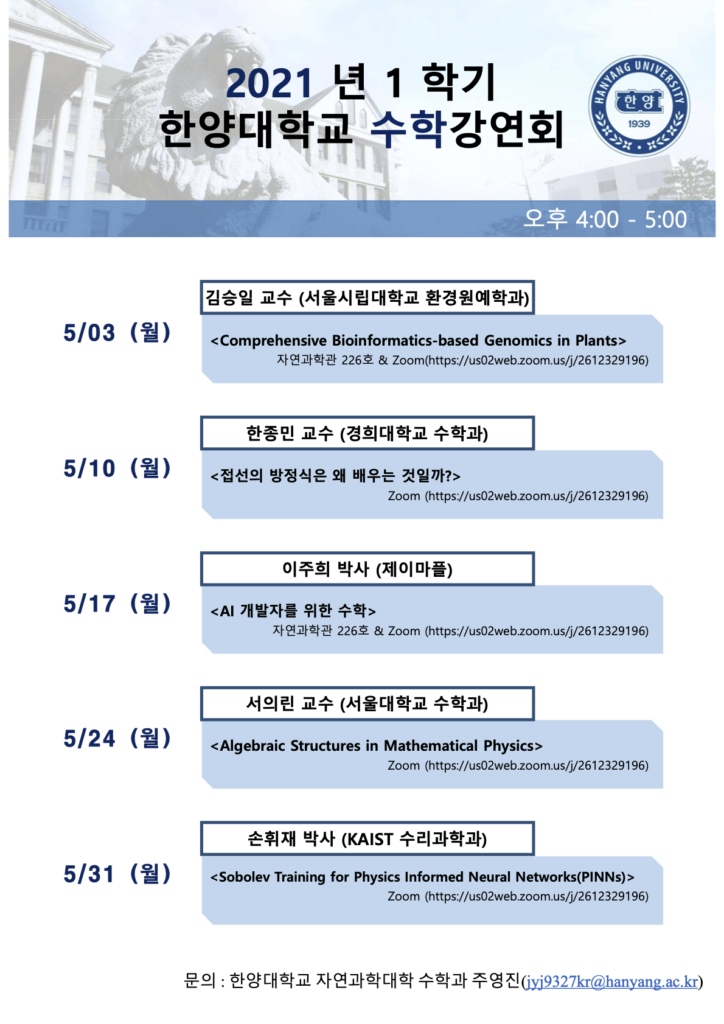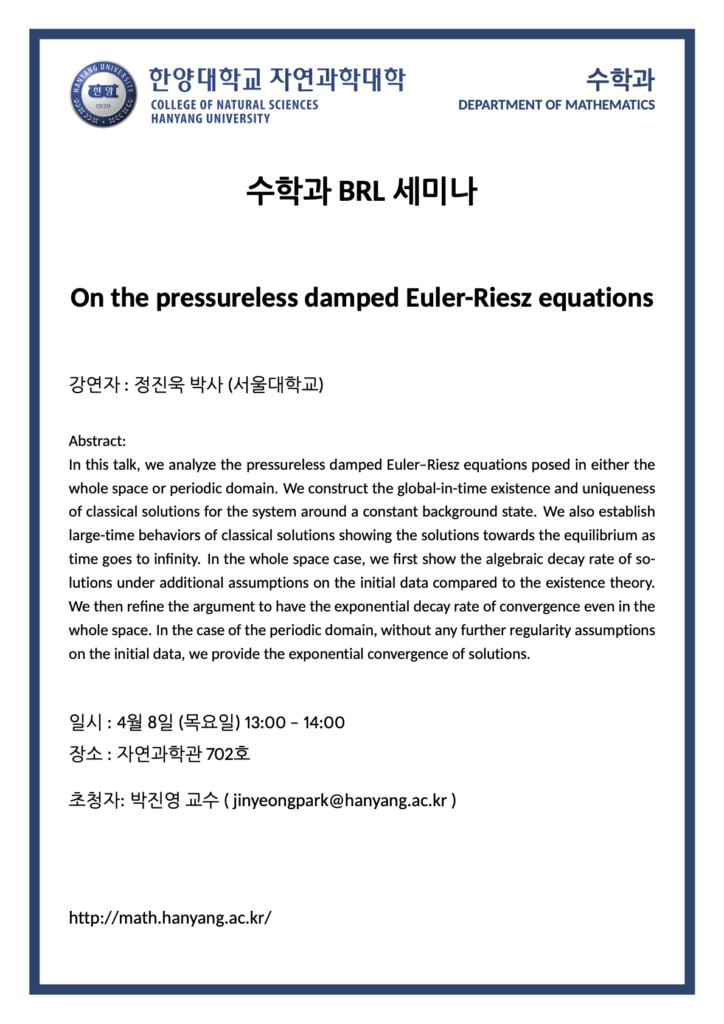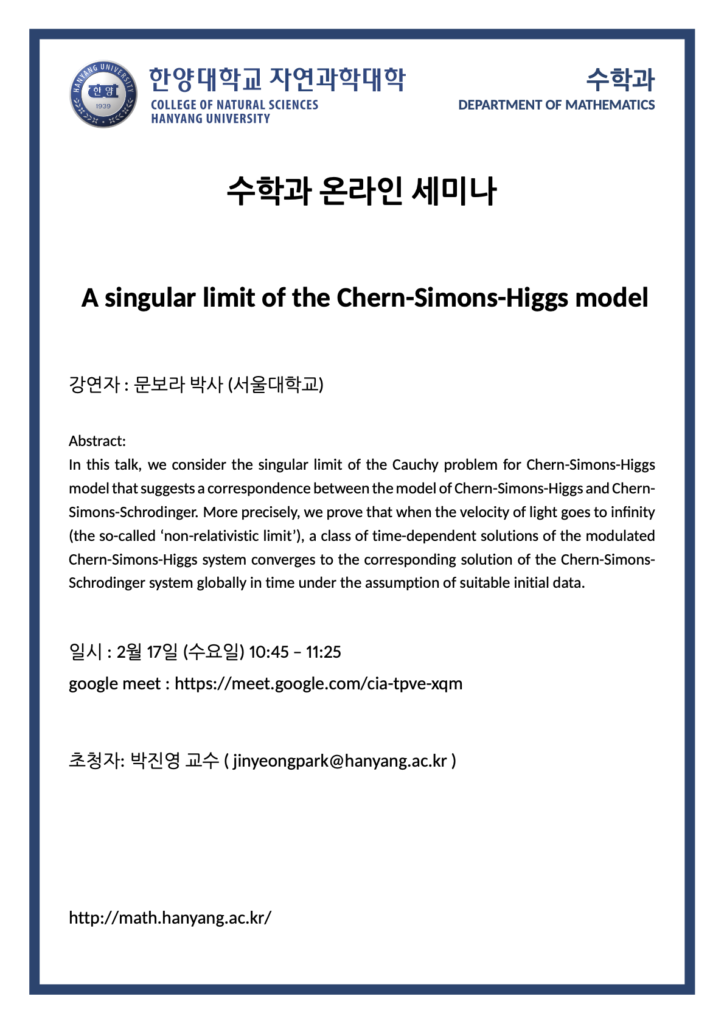Time: May 13th (Friday) 17:10
Place: Natural Science Building #702
Speaker: Prof. Dohyun Kim (Sungshin Women’s University)
Title: Asymptotic behavior for a system of Schrödinger equations
Abstract:
In this talk, we introduce a system for coupled Schrödinger equations, so-called Schrödinger-Lohe (SL) equation describing possible quantum synchronization. First, the recent progress on the SL equation with a specific focus on its emergent dynamics is presented by following a recent review article. Then, we provide a state-of-the-art result for the SL equation with heterogeneous wave functions. Precisely, convergence toward equilibrium is established when the coupling is dominant. Our strategy mainly depends on the method of dimension reduction and the dynamics of the Kuramoto model. This talk is based on the joint work with Dr. Hansol Park (Simon Fraser University).
